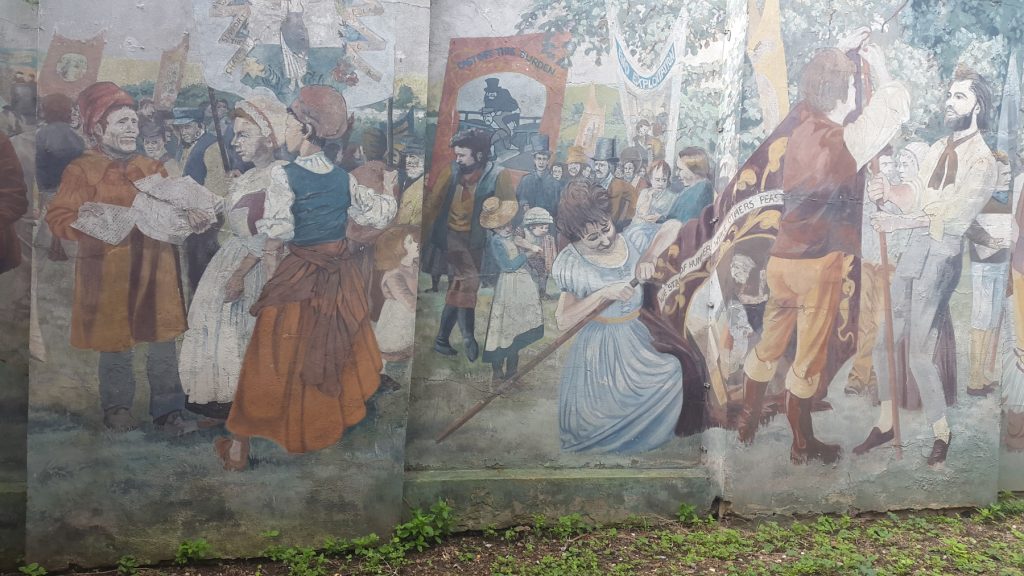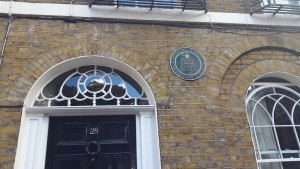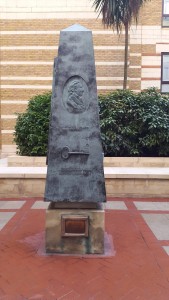Historical Figures and Their Commemorations
All of our first year law undergrads took part in an exercise in week one of their LLB where they escaped City and went to visit a number of buildings of significance in the local area, before tackling some research questions.
They were then asked to write a blog post inspired by their travels. 21 winners were selected from all those posts submitted – this is one of those – thanks to Emma Rowe.
What struck me most about Thomas Paine’s statue in Angel Court was the large key carved out of the front, central portion of the stone monument. Why a key? Whose decision was it that that symbol should represent Thomas Paine’s life on his commemoration? Well, of course the designer, but my thoughts were much more ethereal. Given his powerful literary works, would a quill not be more relevant? As it were, I found the key perfectly fitting. It straight away reminded me of what I knew of the Founding Father’s revolutionary behaviour and political works. Perhaps it would hold little relevance to anyone who did not know of Paine’s history yet to me the key instantly represented the writer’s fights for American and French independence.
His drive was towards individual liberty and the protection of equality and his goal a liberal democracy (whether he knew it or not). Therefore, the image of a key, given any choice of symbols, is extremely fitting in the world of Thomas Paine.
The mural in Edward Square was less familiar to me. Yet as I learned of the Tolpuddle Martyrs it became clear of their relationship to Paine’s story. In both cases, the ruling elite had attempted to quash the, very reasonable, requests of the less powerful, for fear of losing control. Paine was of course influential, but in my opinion not powerful in the sense of governmental control. The Martyrs were unhappy with their pay cuts and formed a group, as the early form of a trade union. Yet just as Edmund Burke (a Member of Parliament, famous for his works on the French Revolution) clashed with Paine, the nobility clashed with the unionists and condemned them under a law shrouded in obscurity. All for what exactly? Because they “swore a secret oath”. In reality, with the first general election having taken place a mere thirty years prior, and still no universal suffrage, true democratic means were feeble. Control was still crucial to what was considered an effective governance in the 1830s.

 For example, in 1936 Orwell travelled to Spain where he fought in the Spanish Civil War against General Francisco Franco and was shot in the arm and throat. At this point it became clear to me that he was no little English writer dedicated to his life producing two literary texts that would live on in classrooms for years to come. Shot in the throat!
For example, in 1936 Orwell travelled to Spain where he fought in the Spanish Civil War against General Francisco Franco and was shot in the arm and throat. At this point it became clear to me that he was no little English writer dedicated to his life producing two literary texts that would live on in classrooms for years to come. Shot in the throat!
Well, I was most surprised. Almost as surprised as my discovery that a playwright I had never heard of defaced public library books with images of naked, tattooed men and was imprisoned for theft and malicious damage. Joe Orton that is, the last stop on the adventure.
Background reading
https://en.wikipedia.org/wiki/Thomas_Paine
http://www.biography.com/people/george-orwell-9429833
http://www.historytoday.com/john-stevenson/tolpuddle-martyrs

